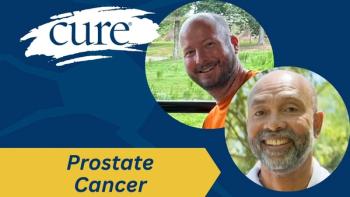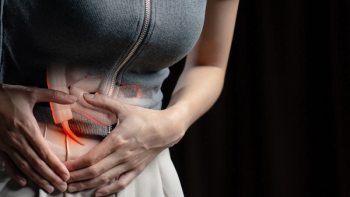
Expansion Plans at St. Jude Aim to Help Cure Children in the U.S. and Around the World
A hospital whose mission is to cure children’s catastrophic diseases is not only providing treatment, but also conducting research and making new medicines. Now, in addition to improving its patient-care and research capabilities, it plans to reach into low-income countries to help cure more children with cancer.
St. Jude Children’s Research Hospital was the product of a prayer, and now, for many families, it’s the answer to one.
The Memphis, Tennessee hospital has one mission, which is to cure children of catastrophic diseases. It accomplishes that by conducting laboratory research and sharing data with outside researchers to help advance the pace of science. And, of course, it treats children, in many cases through clinical trials with medicine discovered and made onsite.
But the kernel of an idea that led to the hospital’s creation is still at the heart of everything that happens at St. Jude: providing help to families that have nowhere else to turn.
As scientists conduct cutting-edge research at the facility, parents pull their children in red wagons through patient wards decorated according to themes, complete with fanciful furniture and sounds effects of space, the jungle or the sea. An imagine room offers videos and video games on a floor-to-ceiling screen. Therapy dogs are brought in for the children to snuggle. There’s an outdoor butterfly wall, a teen art gallery and a gigantic work of art made entirely of sequins.
“Children and families are at the center of everything,” James Downing, M.D., president and CEO of St. Jude, explained during a recent tour of the facility for members of the media. “Children are the purpose, and everyone in the organization knows that mission, and that what they do matters.”
A State-of-the-Art Effort
St Jude treats 7,820 children each year on its 65-acre campus, about a third of them from outside the Memphis area. Seventy percent of those treated have cancer; 15 percent have nonmalignant blood diseases, such as sickle cell anemia; and another 15 percent have infectious diseases, including HIV and flu. St. Jude has just 85 inpatient rooms but owns and operates more than 300 housing units for patients and their families — some on campus and some off, for shorter and longer-term stays — preferring this to extended inpatient care that interferes with family life. The facility has the world’s highest rate of patients enrolled in clinical trials, with 60 percent participating.
While St. Jude bills health insurance for care, it never charges a patient or family for treatment, lodging, transportation or food.
“We lose money on every single patient,” Downing said. “Other hospitals can’t do that, but we proudly lose money on every patient and probably spend twice as much on them as other hospitals spend.”
Seventy percent of the hospital’s funding comes from donations, most from small donors, although numerous corporate sponsors also help to keep it growing and functioning. As a result, St. Jude is the largest health care-related charity in the United States and invests in pediatric research at level similar to that of the National Cancer Institute, Downing said.
Other efforts also distinguish St. Jude as a leader in pediatric treatment and research:
- St. Jude’s Data Center houses the hospital’s advanced scientific computing infrastructure. It’s a 1.2-megawatt center, with 6,300 square feet dedicated to the data hall of servers.
- St. Jude is engaged in large-scale genomic sequencing projects that are revealing some of the genetic factors that drive childhood cancers and other diseases. So far, more than 10,000 children’s genomes have been mapped, and the hospital now routinely conducts comprehensive gene sequencing on all eligible patients. Through this project, information has been gleaned about the mechanisms of brain and other solid tumors, leukemias, sickle cell anemia and Lou Gehrig’s disease. An important discovery was that one in 10 children who develop cancer are genetically predisposed to the disease.
- The institution offers cloud-based public access to the fully sequenced genomes of 10,000 pediatric patients with cancer, in the hopes that sharing the information will lead to the highest possible number of treatment breakthroughs. The St. Jude Cloud is a growing set of data meant to help researchers at the Memphis facility and beyond understand the genetic mutations that drive pediatric cancers and find new drugs to treat the diseases. The project allows researchers anywhere to access and evaluate the data without having to set up their own electronic storage systems or come up with analytical tools.
- Based on genomic findings, St. Jude conducts screenings on cells and preclinical models to determine which drugs work against children’s solid tumors. With support from the Howard Hughes Medical Institute, St. Jude’s Childhood Solid Tumor Network publicly shares data from this research to help foster scientific breakthroughs. At no cost, the network offers resources, unpublished data, samples and models to scientists anywhere who work in labs or with patients. The aim is to improve cure rates for pediatric solid tumors.
- In its Good Manufacturing Practice facility, St. Jude makes vaccines, gene therapies and targeted drugs that have been discovered through its laboratory research. The institution tests the medications in clinical trials and, if the drugs prove effective, sells them to pharmaceutical companies; in turn, those companies seek approval from the Food and Drug Administration to market the drugs.
- St. Jude became a Ph.D.-granting institution in 2017, when the first class of students graduated from its Graduate School of Biomedical Sciences. It is also now accepting students into a global science medicine program.
New Projects on the Horizon
In addition to these projects, St. Jude is launching new efforts, both globally and locally:
- The facility has plans to help reduce the global disease burden for children. Within the next decade, it wants to increase its reach from 3 to 30 percent of the global childhood cancer burden. It anticipates training clinical workers in countries with low pediatric cancer cure rates, helping to strengthen health care systems there and conducting research that will help sustain continuous improvement worldwide. As part of this effort, St. Jude has contributed $15 million to a new World Health Organization collaboration meant to increase access to cancer care for children across the globe. The goal is to raise cure rates in low- and middle-income countries for 60 percent of children with six of the most common cancers by 2030.
- St. Jude is spending $412 million to build an eight-floor, 625,000-square-foot advanced research center that will open in 2021.
- The hospital is making a $25 million investment to expand its structural biology program, which allows scientists to view diseased cells down to the level of atoms. Understanding how mutated cells look and act can help scientists develop medicines tailored to work against them. As part of the expansion, St. Jude will build the world’s largest nuclear magnetic resonance spectrometer for studying proteins, DNA, RNA and other biomolecules.
- Working with IDEO, a global design company, St. Jude is creating a town hall center for the convenience and comfort of patients and families. The center will place amenities close together, including resting nooks, a learning center, a patio, a “genius bar” where patients and caregivers can share ideas and guidance, a living room, a chapel, a school program and a café and general store.
Looking Back
St. Jude opened its doors in 1962 after a decade of work by entertainer Danny Thomas to launch it. As a young performer, when Thomas was having trouble finding work, he’d prayed to St. Jude Thaddeus, the patron saint of hopeless causes, saying, “Show me my way in life and I will build you a shrine.”
Soon after, Thomas rose to stardom in radio, film and television, and he stayed true to his promise. He brought together a group of Memphis businessmen to build the hospital, and they came up with the mission that continues to guide it today.
It was Thomas who was determined to make treatment there free. He and his wife, Rose Marie, traveled all over the country speaking about the proposed hospital and asking for support. In addition, Thomas asked fellow Arabic Americans to help raise funds to run it, seeing the effort as a way for them to thank the United States for welcoming their parents into the country as immigrants. Out of that effort arose American Lebanese Syrian Associated Charities (ALSAC), which raises hundreds of millions of dollars for the hospital each year.
Thomas died in 1991, but he has not been forgotten. On display in the hospital are works by cartoonists who, upon his death, heralded Thomas for his efforts on behalf of St. Jude.
And in a hospital common area sits a bust of Thomas’ head, bronzed everywhere except for its shiny, gold nose.
Throughout each day, people stop there to make the nose a bit shinier. The tradition has less to do with science than with pure, simple hope: According to hospital lore, rubbing Thomas’ nose is a sure way to bring good luck.




